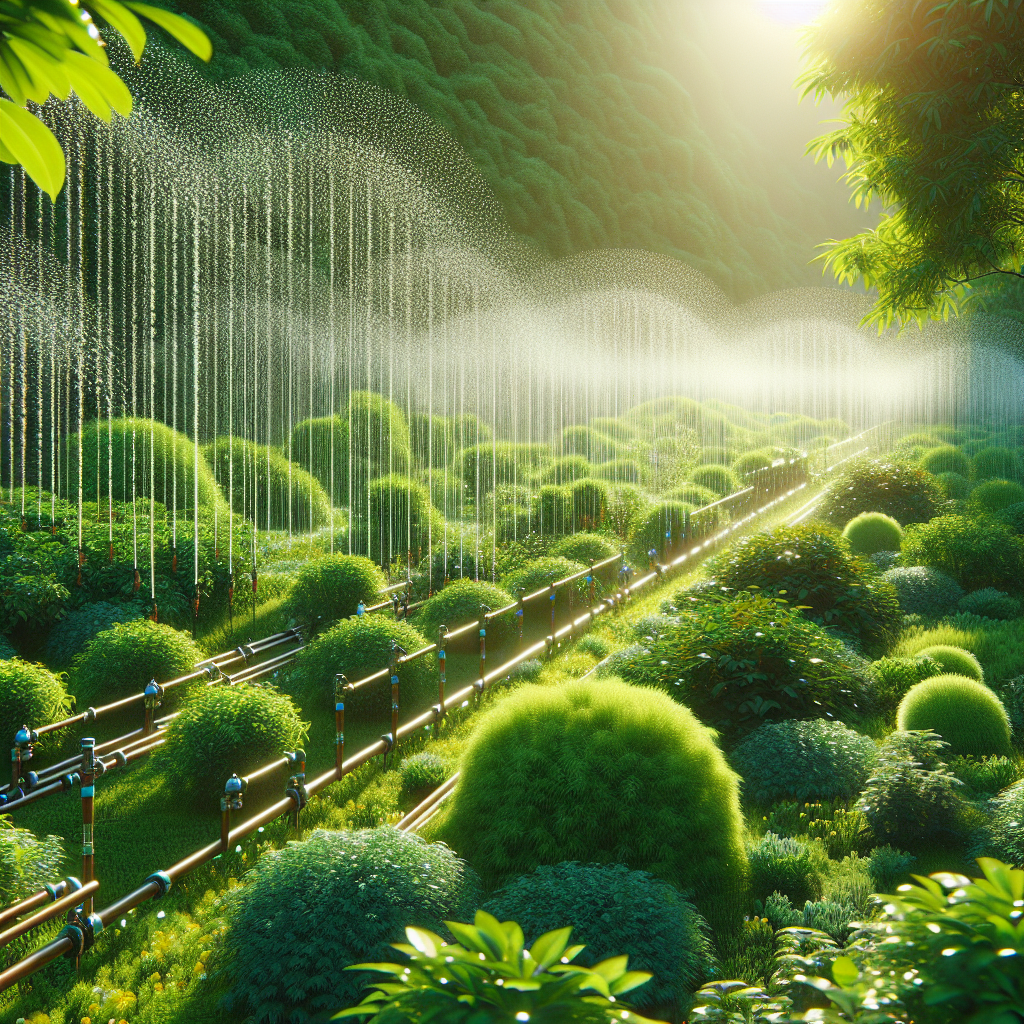Imagine a lush garden filled with vibrant flowers and healthy vegetables, all thriving under the gentle care of a slow drip irrigation system. This innovative watering method delivers just the right amount of moisture directly to the roots of plants, ensuring optimal growth and beauty. In this article, we will explore the ins and outs of slow drip irrigation systems and how you can achieve stunning results in your own garden.
Slow drip irrigation systems have become increasingly popular among gardeners due to their efficiency and effectiveness. By slowly dripping water directly onto the soil around plants, these systems minimize water waste through evaporation or runoff. This targeted approach also helps prevent weed growth by avoiding watering areas where weeds may sprout. Additionally, slow drip irrigation can reduce the risk of fungal diseases that thrive in moist environments, as it keeps foliage dry while delivering water to the roots where it is needed most.
Now, let’s delve into how you can set up a slow drip irrigation system in your garden to achieve beautiful results.
**Choosing the Right Components**
The first step in setting up a slow drip irrigation system is selecting the right components for your specific needs. There are various types of tubing, emitters, connectors, and filters available on the market, so it’s essential to choose high-quality materials that will withstand the test of time.
**Tubing**
When choosing tubing for your slow drip irrigation system, opt for durable materials such as PVC or polyethylene. These materials are resistant to UV rays and can withstand exposure to outdoor elements without deteriorating. Additionally, consider the diameter of the tubing based on the water flow requirements of your plants. Thicker tubing will deliver more water at a faster rate, while thinner tubing is better suited for low-flow applications.
**Emitters**
Emitters are devices that control the flow of water from the tubing to each plant in your garden. There are various types of emitters available, including drippers, bubblers, and micro-sprays. Drippers release water slowly in a steady stream, while bubblers deliver water in small bursts ideal for larger plants or shrubs. Micro-sprays emit a fine mist suitable for delicate flowers or herbs.
**Connectors**
Connectors are used to join different pieces of tubing together or attach emitters to tubing. Make sure to use connectors that provide a secure fit without leaking water. There are barbed connectors that insert into tubing for a tight seal and compression fittings that screw onto tubing for added stability.
**Filters**
Filters are essential components of a slow drip irrigation system as they prevent debris from clogging emitters or tubing. Install a mesh filter at the beginning of your system to catch any sediment or particles present in your water source. Regularly clean or replace filters to maintain optimal water flow through your system.
**Installing Your Slow Drip Irrigation System**
Once you have gathered all the necessary components for your slow drip irrigation system, it’s time to install them in your garden. Start by laying out the tubing along your plant beds or rows, making sure to position emitters near each plant’s root zone for maximum effectiveness. Secure tubing with stakes or clips to keep it in place and prevent tripping hazards.
Next, connect emitters at regular intervals based on each plant’s watering needs – smaller plants may require fewer emitters while larger plants may need multiple emitters distributed evenly around their root zone. Test your system by turning on the water source and checking for leaks or uneven distribution of water. Make adjustments as needed until each plant receives adequate moisture without excessive runoff.
**Maintaining Your Slow Drip Irrigation System**
Regular maintenance is crucial for ensuring optimal performance from your slow drip irrigation system. Inspect tubing periodically for signs of wear or damage such as cracks or leaks – replace any compromised sections immediately to prevent water loss. Clean filters regularly by rinsing them with clean water to remove debris buildup that may impede water flow.
Additionally, adjust emitter flow rates as needed throughout different seasons – plants may require more frequent watering during hot weather compared to cooler months when evaporation rates are lower. Monitor soil moisture levels using a moisture meter or simply by feeling the soil with your fingers – adjust watering schedules accordingly based on plant requirements.
In conclusion, slow drip irrigation systems offer an efficient and effective way to achieve beautiful results in your garden by delivering precise amounts of water directly to plant roots where it is needed most. By choosing high-quality components tailored to your specific needs and properly installing and maintaining your system, you can enjoy lush gardens filled with healthy plants year-round.
—
**FAQs about Slow Drip Irrigation Systems:**
1) How often should I run my slow drip irrigation system?
It depends on factors such as plant type, weather conditions, soil type, and seasonality – monitor soil moisture levels regularly and adjust watering schedules accordingly.
2) Can I use a timer with my slow drip irrigation system?
Yes! Timers can be attached to hose bibs or faucets to automate watering schedules based on preset settings – ensure timers are compatible with low-pressure systems like slow drip irrigation.
3) Do I need specialized tools to install a slow drip irrigation system?
Basic tools such as scissors (for cutting tubing), hole punch (for inserting emitters), and stakes/clips (for securing tubing) are all you need – no specialized equipment required!
4) Will my plants get enough water from a slow drip irrigation system?
Yes! Slow drip systems deliver adequate moisture directly to plant roots where it is needed most – monitor soil moisture levels regularly and adjust emitter flow rates as needed.













